The ADATA XPG Cybercore 1300W PSU Review: Advanced From the Start
by E. Fylladitakis on March 10, 2022 8:00 AM EST- Posted in
- Cases/Cooling/PSUs
- PSUs
- ADATA
- 80Plus Platinum
- XPG
- CWT
Cold Test Results (~22°C Ambient)
For the testing of PSUs, we are using high precision electronic loads with a maximum power draw of 2700 Watts, a Rigol DS5042M 40 MHz oscilloscope, an Extech 380803 power analyzer, two high precision UNI-T UT-325 digital thermometers, an Extech HD600 SPL meter, a self-designed hotbox and various other bits and parts. For a thorough explanation of our testing methodology and more details on our equipment, please refer to our How We Test PSUs - 2014 Pipeline post.
Most PSUs only bother to meet the certification requirements for a 115 VAC input, which is sufficient for overall certification regardless whether they meet the requirements for 230 VAC as well. This is not the case for the Cybercore 1300W, as XPG's PSU is capable of reaching 80Plus Platinum efficiency levels regardless of the input voltage. It has an average nominal load range (20% to 100% of the unit's capacity) efficiency of 93.3% when powered from a 230 VAC source, which drops down to 91.8% when powered from an 115 VAC source.
As promised by XPG, the fan of the Cybercore PSU doesn't even start until the load on the PSU exceeds 30%. Due to its very high efficiency, the internal temperatures of the PSU remains reasonably low even with the fan turned off. Once the fan starts, it will be only marginally audible at first, despite its dual ball-bearing engine. When the load is higher than 800 Watts, the fan’s speed will increase exponentially and will eventually reach its maximum possible speed. The end result is that the Cybercore PSU will get loud when fully loaded, but not unexpectedly so for a compact PSU with that high an output.


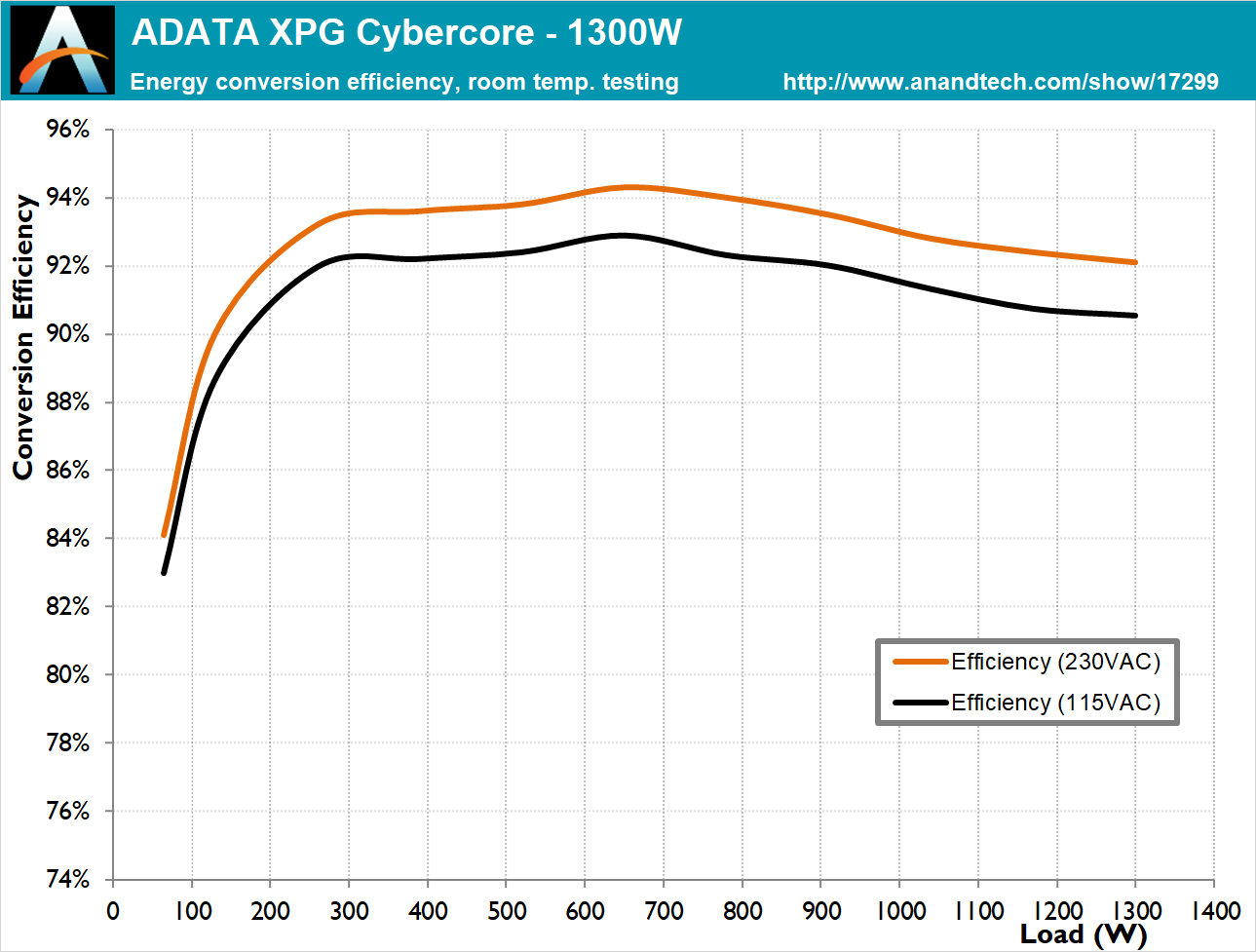
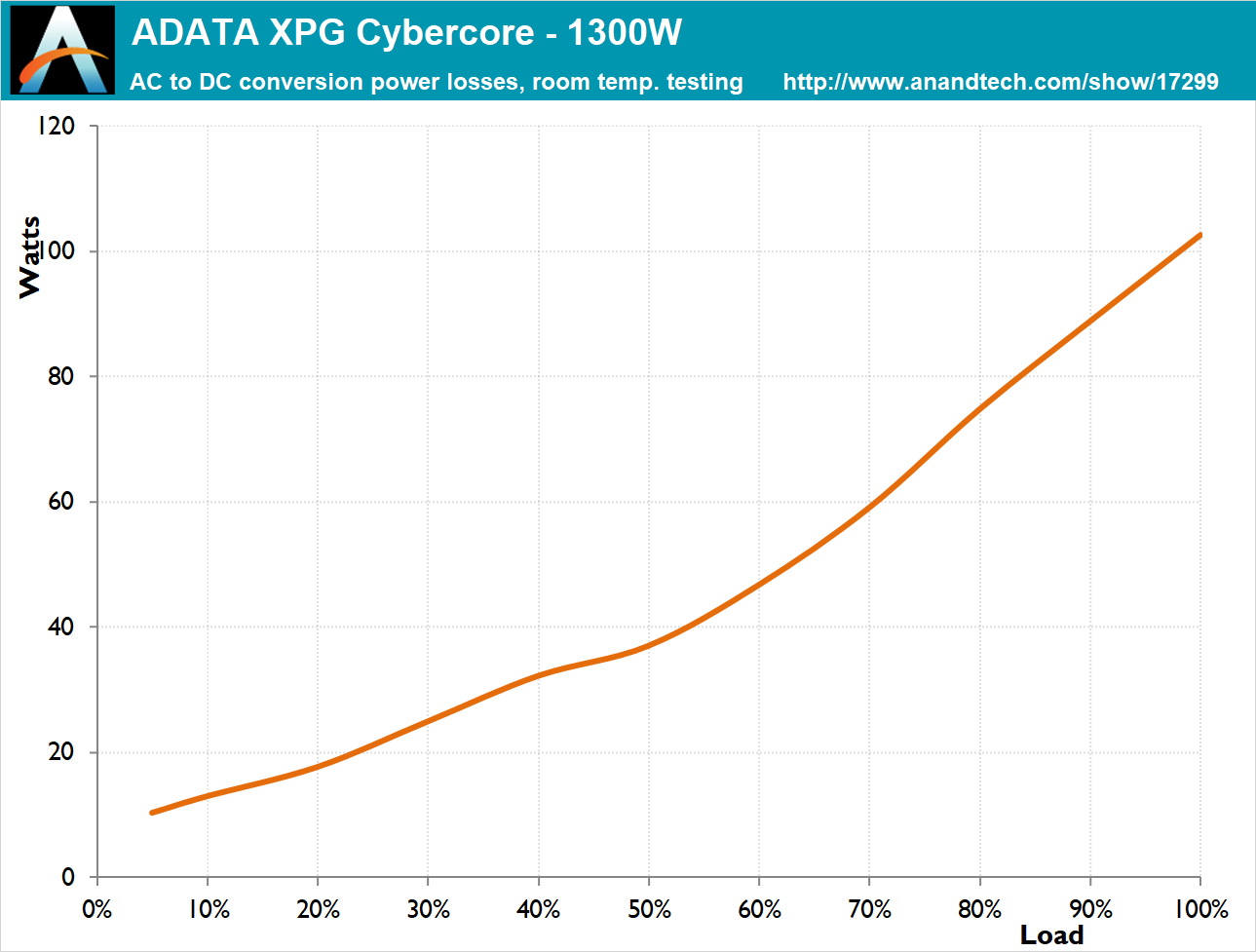
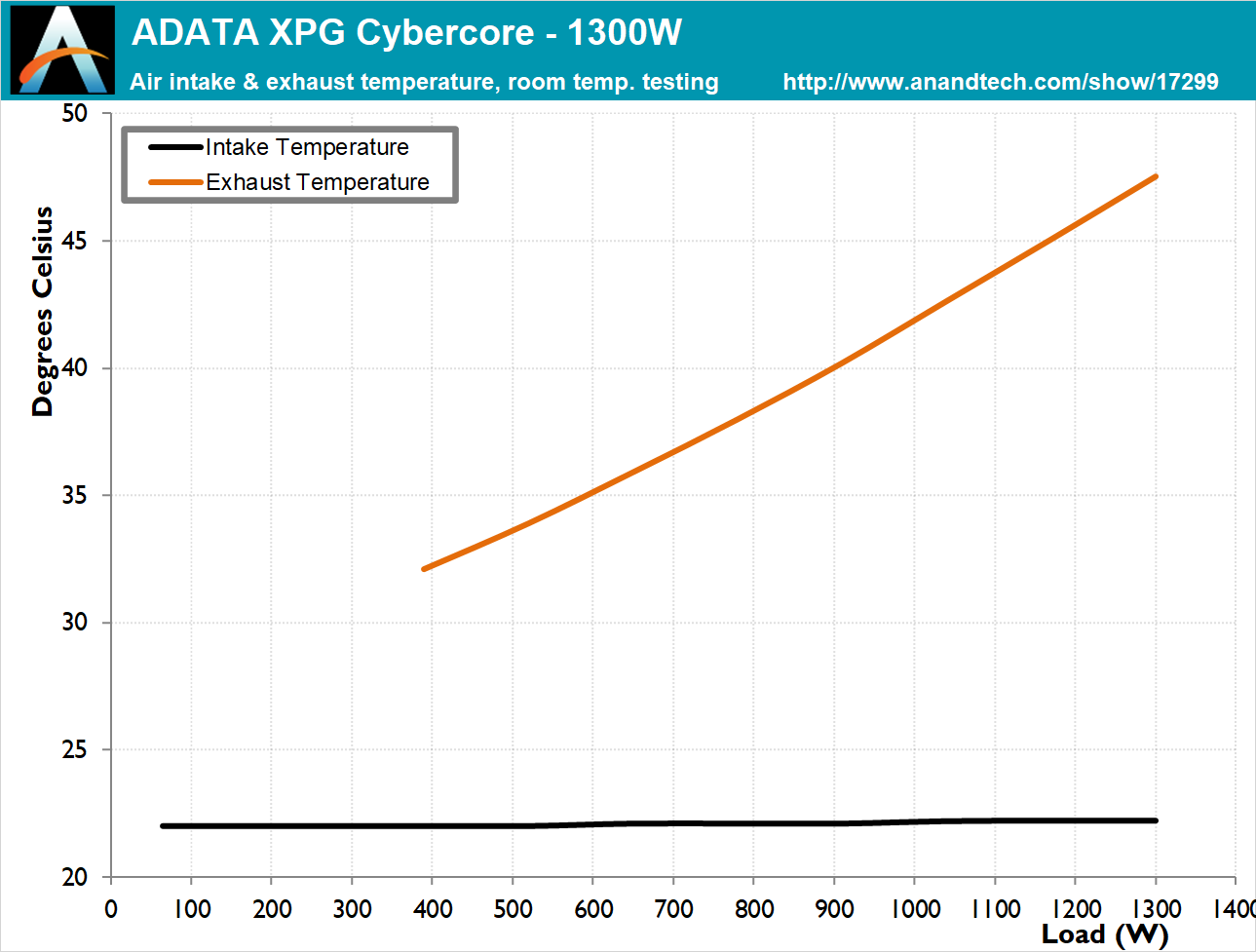
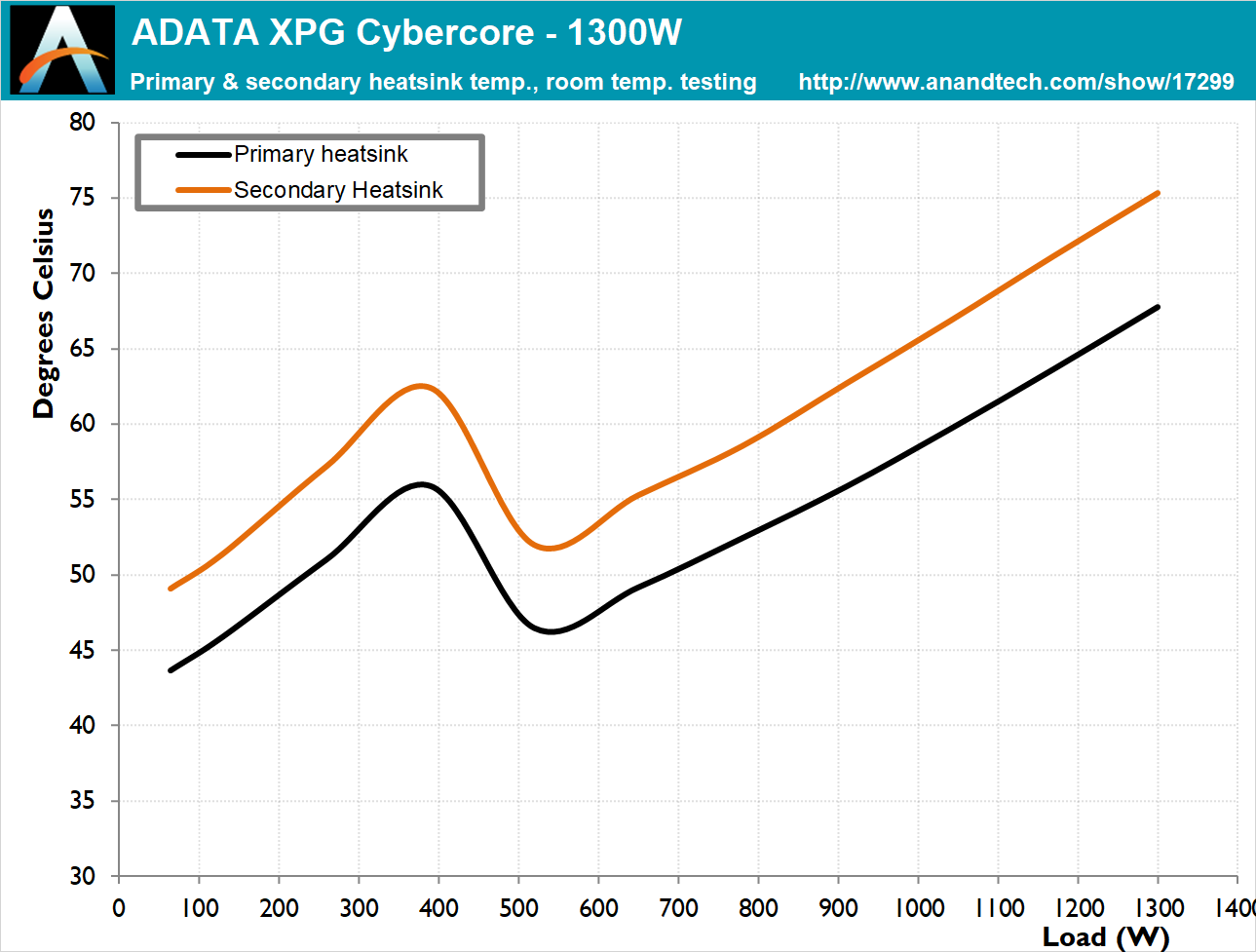
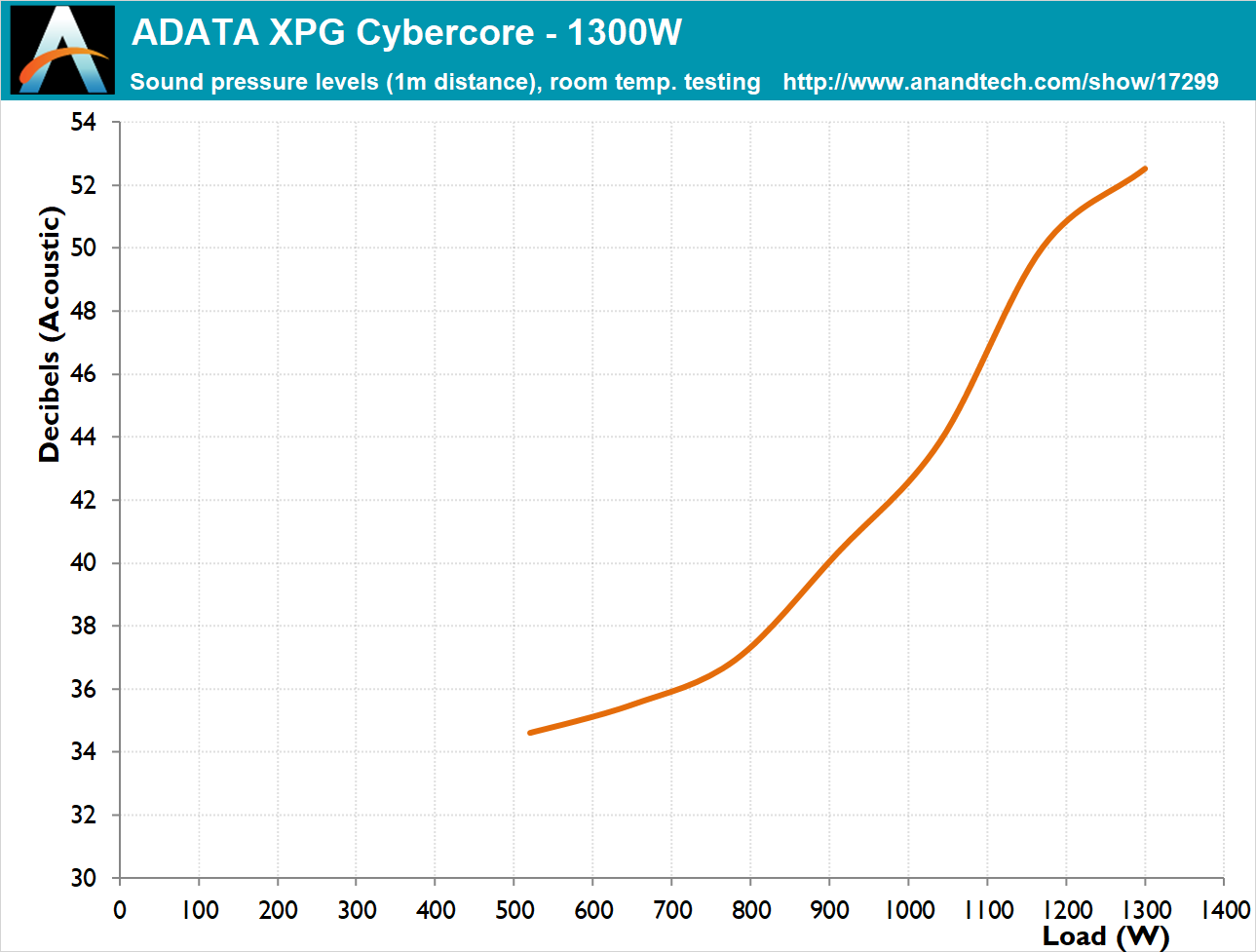








35 Comments
View All Comments
shabby - Thursday, March 10, 2022 - link
When will we start seeing the 16pin connectors gpu connectors?DougMcC - Thursday, March 10, 2022 - link
Yeah I can't imagine buying a PSU over 1000W without it.Einy0 - Friday, March 11, 2022 - link
I can't imagine buying a 1000W power supply at all. My current 850W is overkill even with a Vega 64 in my system. Most people will never even use the 650 Watts required to hit peak efficiency on this 1300W beast. What we need are power supplies that can provide 90+ efficiency at the 50 to 60W idle most of our PC run at these days. Power supplies like this are for what, crypto mining? Servers typically use a completely different form factor, SLI is dead, so yeah mining...Threska - Friday, March 11, 2022 - link
Maybe someone running a thread-ripper build might especially with a modern GPU.Einy0 - Friday, March 11, 2022 - link
Yes, if you have a Threadripper that pulls 400 Watts peak and a 3090 that does 500 Watts peak, you need a 1000 Watt power supply.Eliadbu - Saturday, March 12, 2022 - link
well, you will need more than 1000W don't forget other components and overhead.but future cards will reach 500-600W and even more. getting higher wattage PSU is good idea but I would wait for PSUs that are fully compliant to ATX V3.0 .
ingwe - Sunday, March 13, 2022 - link
You are right. But I can't fathom building a computer that draws that much power. It just feels crazy to me and I don't even live in a very warm climate. It really is just that the energy we are talking about feels crazy. Most plugs in the US are 15 Amps max, so we are getting to the limits there.Byte - Sunday, March 13, 2022 - link
Yep, i built a threadripper 32core system with 2x 2080Ti, it will go over 1000W and shut the system off.at_clucks - Wednesday, March 16, 2022 - link
"future cards will reach 500-600W and even more"With energy prices exploding I can't wait for the already overpriced GPUs to ramp up 600W. They'll sell like *very* hot cakes. Perhaps they decide to switch to smaller nodes, or [gasp!] actually consider efficiency!
meacupla - Friday, March 11, 2022 - link
Just wait until you see the power requirements for the RTX 4090. Rumoured to be 450W to 600W on its own.RTX 3090 requires 480W, but when you factor in its transient loads, this requirement can go above 500W. It is generally recommended to run a minimum 1000W PSU with an RTX 3090, if you don't want to crash during a transient spike.